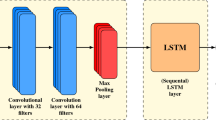Abstract
Many day traders focus on forecasts of stock index futures. These securities are suitable for frequent and time-sensitive trading as well as for short-term investments. However, most day traders’ strategies are based on their experiences or news headlines. Combined with a pool trading policy, this may lead to unsatisfactory average monthly profit, particularly when compared to the opportunity cost of the traders’ full-time employment in other non-trading jobs. This paper represents multiple investment strategies for day traders based on visual trend bands on short-term stock index futures. This study uses sequential minimal optimization and other machine learning algorithms to evaluate the performance of visual trend bands and derive strategies for better predictions. This study also applies empirical methods on short-term stock index futures datasets to explore the impact of visual trend bands on short-term stock index trading. The accuracy of our proposed visual trend bands reaches 82%, which is not only an objectively high forecasting accuracy rate but also substantially higher than other visual trend bands. The proposed visual trend bands can support day traders in realizing higher profits in their day trades and short-term investments.








Similar content being viewed by others
References
Bai Y, Sun Z, Zeng B, Long J, Li L, Oliveira JV d, Li C (2019) A comparison of dimension reduction techniques for support vector machine modeling of multi-parameter manufacturing quality prediction. J Intell Manuf 30:2245–2256
Bebchuk LA, Brav A, Jiang W (2015) The long term effects of hedge fund activism. Columbia Law Rev 115(1):1085–1156
Bogle SA, Potter WD (2015) SentAMaL: A sentiment analysis machine learning stock predictive model. Proceedings on the International Conference on Artificial Intelligence (ICAI), Las Vegas
Cao JS, Wang JH (2019) Stock price forecasting model based on modified convolution neural network and financial time series analysis. Int J Commun Syst 32(12):e3987
Chen S, Zhang B, Zhou G, Qin Q (2018) Bollinger bands trading strategy based on wavelet analysis. Appl EconFinance 5(3):49–58
Chou HM (2020) A collaborative framework with artificial intelligence for Long-term care. IEEE Access 8:43657–43664
Chou HM, Cho TL (2020) Effects of slope coefficients and Bollinger bands on short-term investment. Advance Manag Appl Econ 10(2):101–112
Chou HM, Zhang D, Zhou L, Kang Y (2017) CaCM: Context-aware call management for mobile phones. IEEE 3rd International Conference on Collaboration and Internet Computing (CIC), San Jose, pp 399–405
Chou HM, Li KC, Pi SM (2019) Multinational effects of foreign exchange rate in stock index with classification models for medium-term investment. Advance Manag Appl Econ 9(3):43–53
Chung H, Shin K (2018) Genetic algorithm-optimized long short-term memory network for stock market prediction. Sustainability 10(10):3765
Das SP, Sudersan P (2012) Support vector machines for prediction of futures prices in indian stock market. Int J Comput Appl 41(3):22–26
Desai R, Gandhi S (2014) Stock market prediction using data mining. Int J Eng Develop Res 2(2):2780–2784
Huang W, Nakamori Y, Wang SY (2005) Forecasting stock market movement direction with support vector machine. Comput Oper Res 32(1):2513–2522
Ince H, Trafalis TB (2008) Short term forecasting with support vector machines and application to stock price prediction. Int J Gen Syst 37(6):677–687
Iqbal Z (2013) Efficient machine learning techniques for stock price prediction. Int J Eng Res Appl 3(6):855–867
Jahangiri A, Rakha HA (2015) Applying machine learning techniques to transportation mode recognition using mobile phone sensor data. Intelligent Transportation Systems, IEEE Transactions, p 1–12
Kremic E, Subasi A (2016) Performance of random forest and SVM in face recognition. Int Arab J Inform Technol 13(2):287–293
Lai HC, Tseng TC, Huang SC (2016) Combining value averaging and Bollinger band for an ETF trading strategy. Appl Econ 48(37):3550–3557
Leung J, Chong T (2003) An empirical comparison of moving average envelopes and Bollinger bands. Appl Econ Lett 10(6):339–341
Lin WY, Hu YH, Tsai CF (2012) Machine learning in financial crisis prediction: A survey. IEEE Trans Syst Man Cybernet Part C (Appl Rev) 42(4):421–436
Mozhaddam AH, Mozhaddam MH, Esfandvari M (2016) Stock market index prediction using artificial neural network. J Econ Finance Administrat Sci 21(41):89–93
Safi SK, White AK (2017) Short and long-term forecasting using artificial neural networks for stock prices in Palestine: a comparative study. Electronic J Appl Statistic Analys 10(1):14–28
Yan XX, Zhang YB, Lv XK, Li ZY (2017) Improvement and test of stock index futures trading model based on Bollinger bands. Int J Econ Financ 9(1):78–87
Zhou J, Liu H, Xu Y, Jiang W (2018) A hybrid framework for short term multi-step wind speed forecasting based on variational model decomposition and convolutional neural network. Energies 11(9):2292
Acknowledgments
We thank our research assistant Yuni Chen for her help in collecting the short-term stock index data.
Author information
Authors and Affiliations
Corresponding author
Additional information
Publisher’s note
Springer Nature remains neutral with regard to jurisdictional claims in published maps and institutional affiliations.
Rights and permissions
About this article
Cite this article
Chou, HM., Hung, C. Multiple strategies for trading short-term stock index futures based on visual trend bands. Multimed Tools Appl 80, 35481–35494 (2021). https://doi.org/10.1007/s11042-020-10496-2
Received:
Revised:
Accepted:
Published:
Issue Date:
DOI: https://doi.org/10.1007/s11042-020-10496-2




